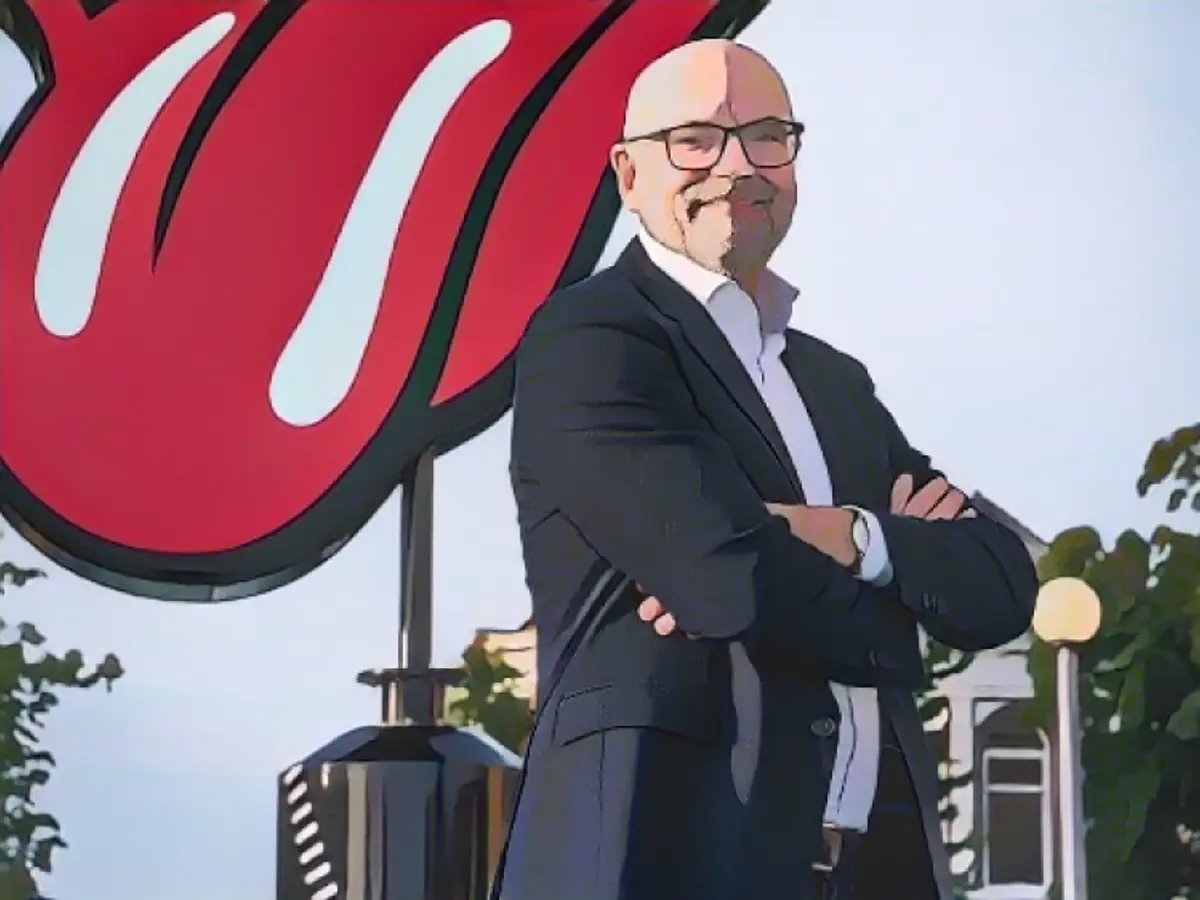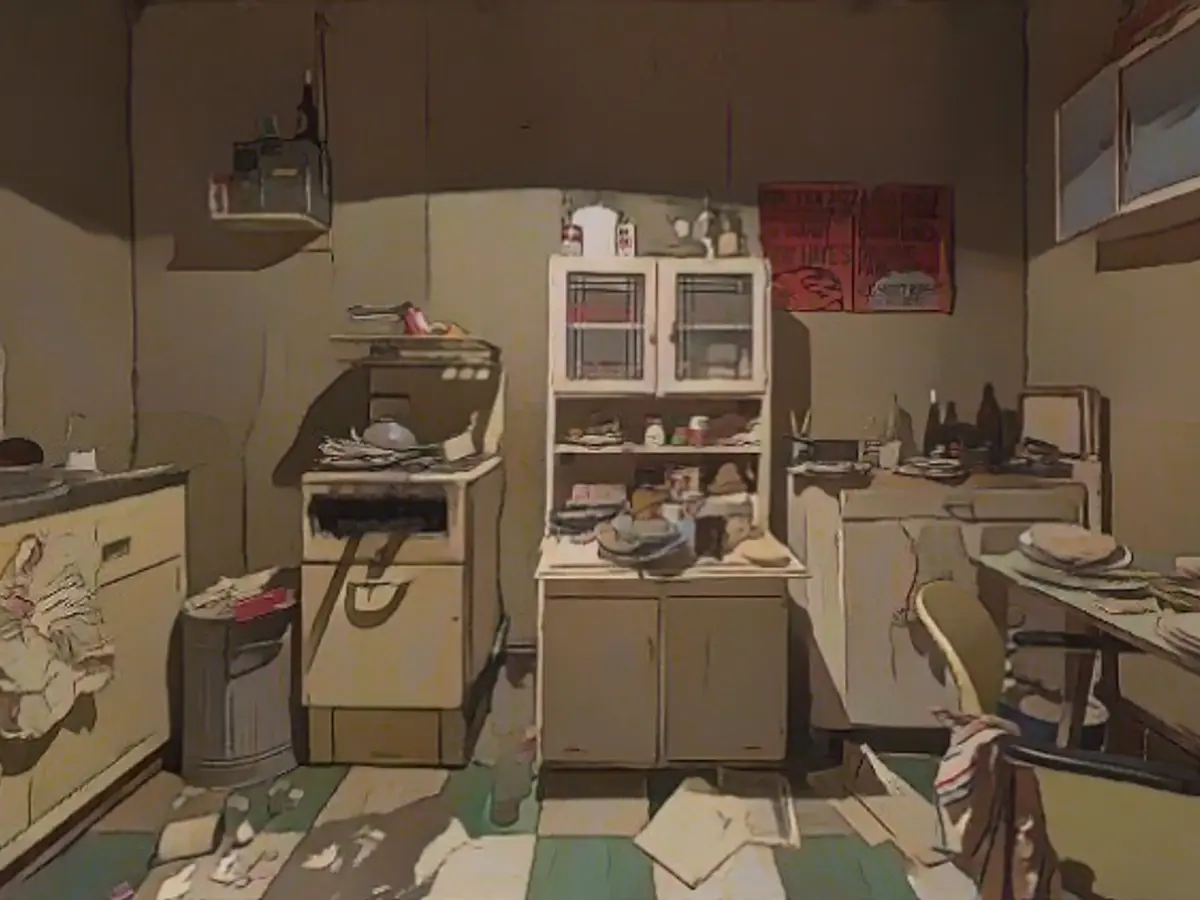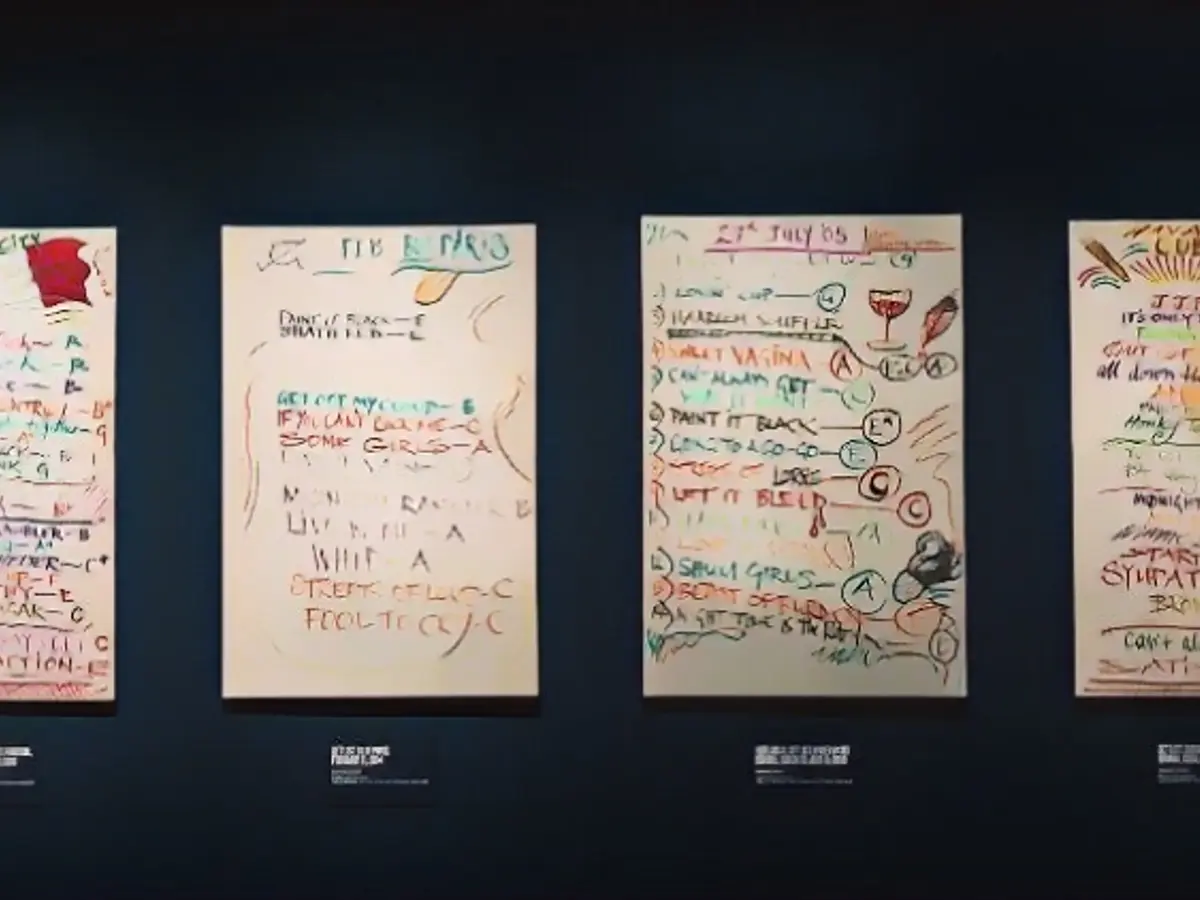The Rolling Stones, generous with extra requests
What are music icons doing in art temples? After a long world tour, "The Rolling Stones - Unzipped" is finally making a guest appearance on the European mainland. After that, the exhibition is over. A tour with Andreas Blühm, Director of the Groninger Museum.

It is still early on this uncomfortable, wintry afternoon. Scraps of music, guitar beats and muted chatter mingle in the museum. There are a lot of people in the building, even in the middle of the week. Unsurprisingly, as no less than 60 years of history and legend of the legendary Rolling Stones can be experienced. "Unzipped" shows original instruments, unknown photographs and record covers. But also intimate diaries, dazzling stage outfits and intricate stage models of the mega-tours that quickly sold out and filled stadiums.
"The band had no idea that they would become famous and had to buy back things like these diaries at auctions," museum director Andreas Blühm tells ntv.de during the tour in Groningen. The band now has its own archive - the exhibition, which is well worth seeing, was assembled from this and private collections. "Unzipped was already our guest in 2020, but then corona came along and after four weeks everything went behind closed doors," says Blühm. Much to the annoyance of fans who also travel to museums to see their idols. Andreas Blühm thinks it's great that this is now the final chord of the international exhibition tour that started in London in 2016 and that the special pieces are finding their audience once again.
Be a rolling stone!

Fun to join in and listen closely is included in the Groninger Museum. Different sound tracks of famous songs can be turned up and down on a mixing desk. Suddenly the drum rolls of Charlie Watts are in focus, the guitar sounds of Keith Richards and Ron Wood are louder, or Mick Jagger's voice can be heard crystal clear. The singer was always mixed far too quietly anyway.
One highlight is a recreated studio with originals from the 70s. For fun, a graphic artist from Groningen has built in five small, rolling stones. It is remarkable how uncomplicated and, above all, how quickly requests for such ideas are answered by the band's management. They are extremely generous with extra requests. "Real fans swoon when they hear that we're touching things," smiles Blühm. It's the same with the drums of Charlie Watts, the late drummer. It stands like a solitaire in its own room and is magically illuminated. It is inconceivable that strangers would even touch this piece of jewelry.
Bottles and butts
And then there's the nucleus of the Stones: a rather rancid London flat share, recreated from the band's memories for "Unzipped". The chaos looks like great fun. Mick, Keith and Brian Jones lived at 102 Edith Grove, as did Charlie Watts for a while. The beds are unmade, the dishes are piled up, bottles and butts are flying everywhere. Of course, musical instruments and a record player are draped around. Blues music was their thing and brought the long-haired Englishmen together.
Legend has it that Brian Jones founded the Rolling Stones here in 1962. "We don't yet know what we'll do with the two rooms when the exhibition is over," says Andreas Blühm. Everything else will go back to its owners after seven years, but nobody wants the flat share back, says Blühm. Perhaps he will auction it off for a good cause.
Overband on three floors
The museum will be 150 years old next year and is one of the most important art museums in the Netherlands. Art history meets photography, fashion and design. It attracts around 200,000 visitors every year. The museum is full, and not just when the Stones are on. The collection, which focuses on the history of the region and the city, is spread across several pastel-colored buildings. The house is now a landmark and symbol of the city.

Various star architects, including Philippe Starck, came to fruition in 1994 with different pavilions. The spectacular result is located on a small island in the middle of a canal and, conveniently, diagonally opposite the Art Nouveau train station, which is also well worth seeing. The double anniversary of 150 years plus 30 years of new construction is being celebrated with a children's biennial with lots of hands-on installations and a Van Gogh show. The museum is also offering a look behind the scenes to answer questions about how works of art are stored or how a collection is created.
Thank you, David!
But back to the Rolling Stones. What is it like for the art historian Blühm when 400 objects from this band fill three floors instead of paintings? "It's fun, and I would never have dreamed of ever hosting exhibitions like this. My passion is museums and I'm delighted that we can show things that are of quality and of cultural-historical interest. What's more, there are suddenly people in the museum who wouldn't necessarily come otherwise."
The David Bowie exhibition in 2016 was a kind of breakthrough. When this great presentation, which also toured the world, had its stop in Groningen, the pop star died. The exhibition unexpectedly appeared in many media outlets and became a huge hit.
Are the Stones actually into art? Andreas Blühm can't really answer that. However, various album covers designed by Andy Warhol or other art superstars testify to a certain understanding of art. Incidentally, Ronnie Wood, who studied design, paints the playlist on canvas before every concert. The unsold works are destined for the Stones archive and can now be seen. Just looking at the colorful pictures, the songs immediately pop into your head.

Once under the roof of the building, the story of the famous Rolling Stones logo, the bright red tongue with the thick lips, is told. At last. It is something like the essence of the band, standing for creative rebellion, freedom, roughness and the directness of rock 'n' roll.
Sticky fingers with tongue
Graphic designer John Pasche designed the cheeky trademark for the Stones in his third year at the Royal College of Art in London. Pasche was inspired by a picture of the Hindu goddess Kali that Jagger had shown him during a brief meeting. A year later, the outstretched pointed tongue was emblazoned on the album "Sticky Fingers" and has since become iconic in its own right.

Anyone who has not yet been gripped by the retro magic will be caught by the grand finale at the latest. In a continuous loop and Dolby Surround, the museum audience experienced the Stones concert "Havana Moon" in Cuba at the end of March 2016. The band played for free in front of 500,000 enthusiastic fans. In Groningen, visitors want to stay seated, sing along and tap their feet. But as it says so aptly at the end of the recording: "You can't always get what you want."
The Rolling Stones - Unzipped, Groninger Museum, Museumeiland 1, 9711 ME Groningen, Netherlands, open until January 21, 2024, Tuesday - Sunday 10 am - 5 pm.
Read also:
- Snow chaos further restricts Bavaria
- Unanimous decision: faster wolf culls possible
- The year of climate records: extreme is the new normal
- Snow and ice paralyze southern Germany
Mick Jagger, the lead singer of the Rolling Stones, was surprised when he found out that his band had to buy back some items from their early days, such as diaries, at auctions. The Rolling Stones' exhibition, "Unzipped," which is currently on display at the Groninger Museum in the Netherlands, includes these original instruments and diaries, among other things.
During a tour of the exhibition, Andreas Blühm, Director of the Groninger Museum, mentioned that the band's management was incredibly generous with extra requests, even going as far as fulfilling requests for small, rolling stones to be added to a recreated studio for fun.
Source: www.ntv.de






